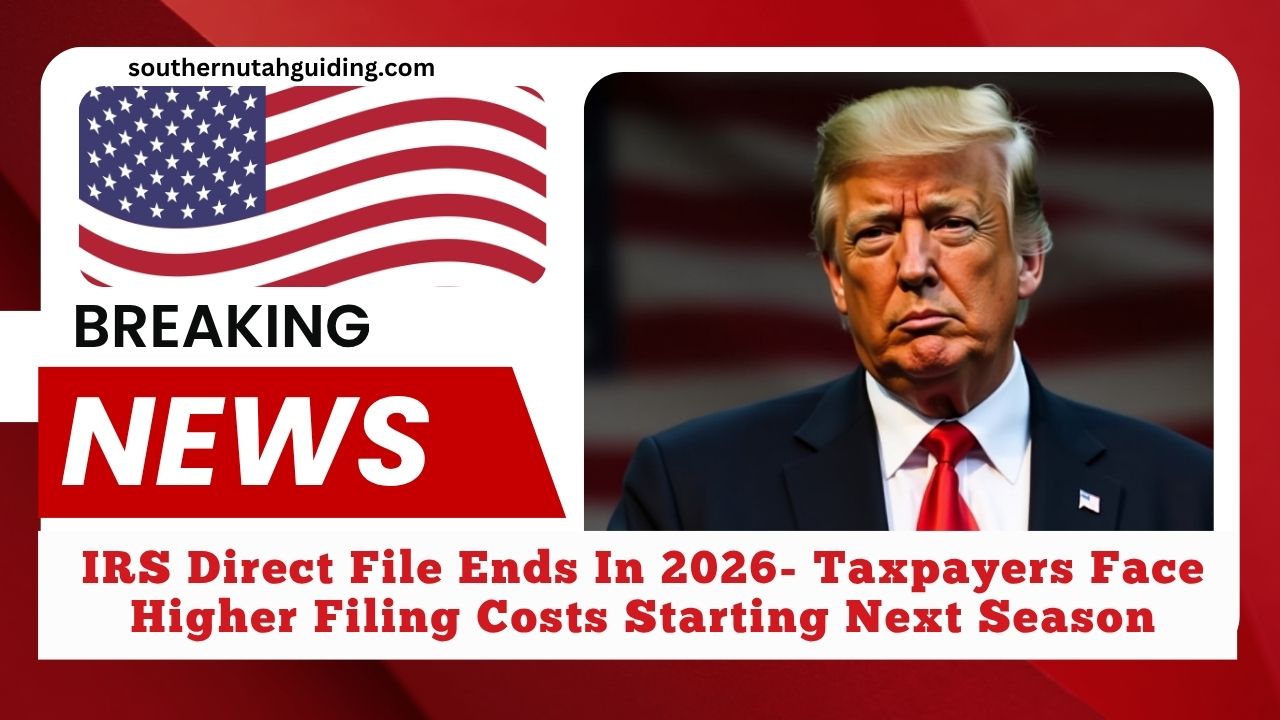The Internal Revenue Service (IRS) has announced the end of the Direct File program starting in 2026, after a brief run that allowed eligible
Americans to file their federal taxes for free through the IRS platform. While the tool gained praise and helped hundreds of thousands, its discontinuation could lead to increased costs for millions of taxpayers, especially low-income households.
What Was the IRS Direct File Program?
Launched as a pilot in 2024, the Direct File program expanded in 2025 to include residents in 25 U.S. states.
It was designed for simple federal returns, offering free, direct e-filing through the IRS without needing third-party tax software or paid preparers.
- Eligibility: Primarily for single or joint filers with W-2 income, standard deductions, and no complex credits or investments.
- User Satisfaction: According to IRS data, 94% of users rated the experience as “excellent” or “above average.”
Despite its success, the program was axed, with IRS officials citing the need to redirect resources toward broader modernization and audit efforts.
Why Is the End of Direct File a Big Deal?
Ending Direct File means fewer free filing options for taxpayers. The remaining free-filing solution, the IRS Free File Program, depends on partnerships with private software providers and includes income caps and state-by-state limitations, making it less accessible.
For the average working American, especially those with limited tax knowledge, this change could mean:
- Turning to paid software like TurboTax or H&R Block
- Hiring professional tax preparers
- Facing costs ranging from $40 to $200+, depending on complexity
Who Will Be Most Affected?
While everyone loses access to Direct File, the burden will fall hardest on:
- Low-income families who previously filed free
- Retirees with limited returns
- Young adults with simple W-2 income and no dependents
The elimination of Direct File may also raise concerns about data security, transparency, and cost fairness, especially for those used to the IRS-run system.
IRS Tax Refund Processing Timeline (2025)
Although Direct File ends in 2026, here’s what remains in place for refunds filed in 2025:
| Return Type | Filing Date | Expected Refund Date |
|---|---|---|
| E-file (early) | Feb – April 2025 | Within 21 days of filing |
| E-file (late) | June 9, 2025 | Around August 8, 2025 |
| E-file (very late) | July 7, 2025 | Around September 5, 2025 |
| Paper Returns | Any date | 6–8 weeks post submission |
| Amended Return (1040-X) | Any date | 8–12 weeks; possibly up to 16 |
If you filed on time (by April 15, 2025), you likely received your refund by early June. If not, the delay may be due to a late submission or an amended return.
The end of the IRS Direct File program in 2026 marks a significant shift in the tax filing landscape. While it only served a fraction of filers during its short run, it provided a transparent, cost-effective, and trusted tool for eligible taxpayers.
Now, millions may face higher costs, reduced access, and more complexity just to file a simple tax return.
As tax season approaches, it’s essential to explore alternative free options, verify eligibility for Free File, and stay informed about IRS updates to avoid unexpected expenses in 2026.
FAQs
Why is the IRS ending the Direct File program?
The IRS is reallocating resources to focus on system modernization and more efficient auditing practices instead of maintaining the Direct File infrastructure.
Will there still be a way to file taxes for free?
Yes, but only for those who qualify under the IRS Free File Program, which includes income limits and limited software options.
How much could it cost to file taxes now?
Without Direct File, tax filing may cost anywhere from $40 to $200 or more, depending on software or professional fees.

